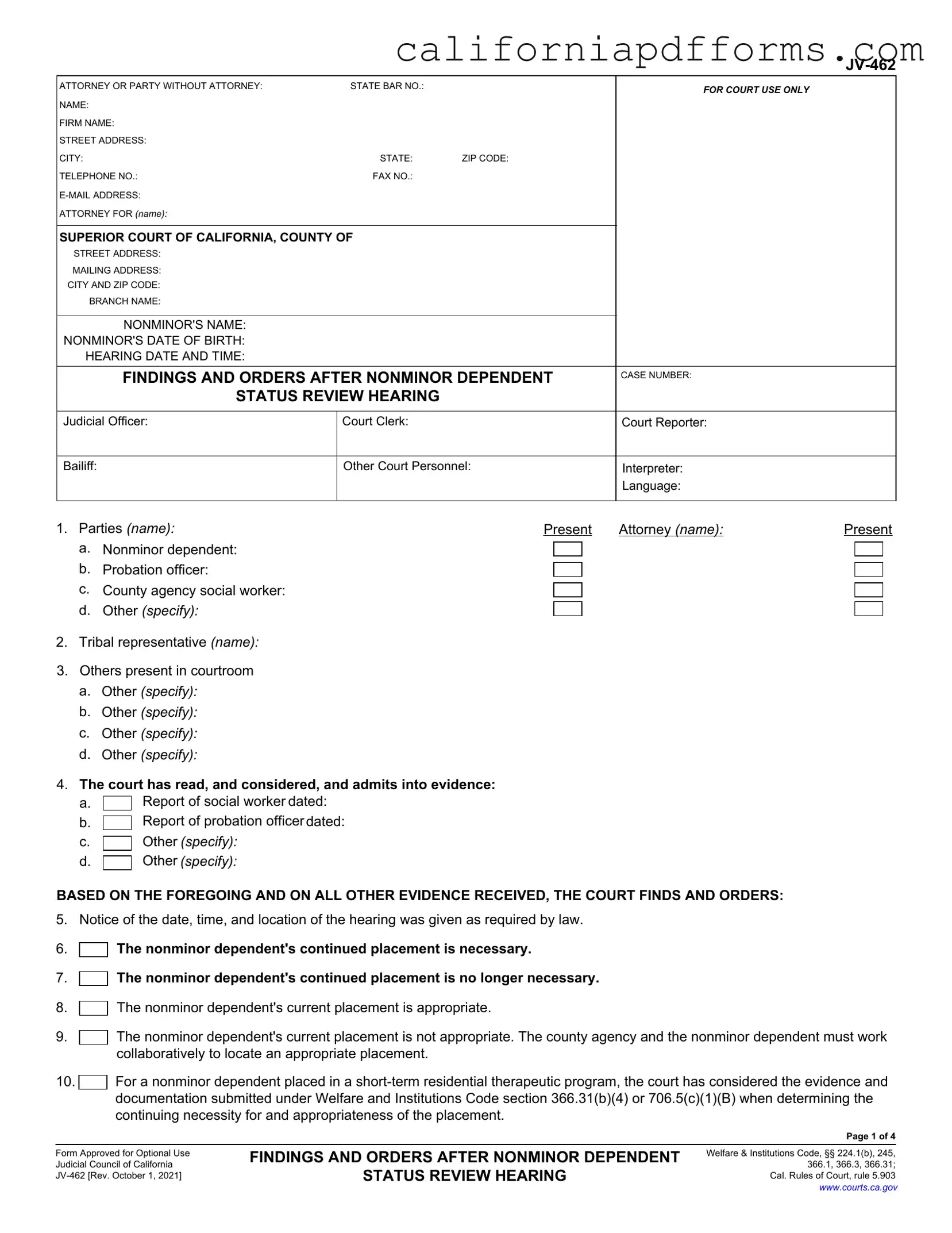The California JV-462 form is used during court hearings to review the status of nonminor dependents placed in short-term residential therapeutic programs. It helps the court assess whether the current placement is appropriate and necessary, based on evidence and documentation provided under specific welfare codes. The form also facilitates discussions about the nonminor's transition to independent living and the services they may need.
The JV-462 form is typically completed by the attorney representing the nonminor dependent or the county agency involved in the case. It requires information about the nonminor, their current situation, and the plans for their future. The form must be filed with the court prior to the status review hearing.
The form requires several key pieces of information, including:
-
The nonminor's name and date of birth.
-
The case number and details of the hearing, such as date, time, and location.
-
Names of all parties present at the hearing, including attorneys and social workers.
-
Findings related to the nonminor's Transitional Independent Living Case Plan.
Additionally, it includes sections for the court's findings and orders regarding the nonminor's placement and future plans.
The court can make various findings based on the information presented, including:
-
The current placement is appropriate or not.
-
Whether continued placement is necessary.
-
Progress made by the nonminor toward independence.
-
Whether the county agency has made reasonable efforts to assist the nonminor.
These findings guide the court in making decisions about the nonminor's future and any necessary services.
What happens if the court determines that the current placement is not appropriate?
If the court finds that the current placement is not appropriate, it will order the county agency and the nonminor dependent to work together to locate a more suitable placement. This collaborative effort aims to ensure the nonminor's needs are met and that they have the support necessary for a successful transition to independent living.
The JV-462 form is closely linked to the Transitional Independent Living Case Plan, which outlines the steps a nonminor must take to prepare for adulthood. The form assesses whether the nonminor's plan includes appropriate services and goals, such as education, employment, and independent living skills. The court evaluates the effectiveness of the plan and the county agency's compliance in providing support.
What should be done if a nonminor dependent is unable to meet the criteria for independent living?
If a nonminor dependent cannot meet the criteria for independent living, the court will consider their medical conditions or other valid reasons. The county agency is expected to provide assistance and develop a plan that accommodates these challenges. The focus remains on ensuring the nonminor receives the necessary support while working towards independence.
After the JV-462 form is completed and submitted, a status review hearing will be scheduled. During this hearing, the court will review the findings and orders based on the information provided. The court may then decide on the nonminor's future placement, services needed, and any necessary follow-up hearings to monitor progress.
